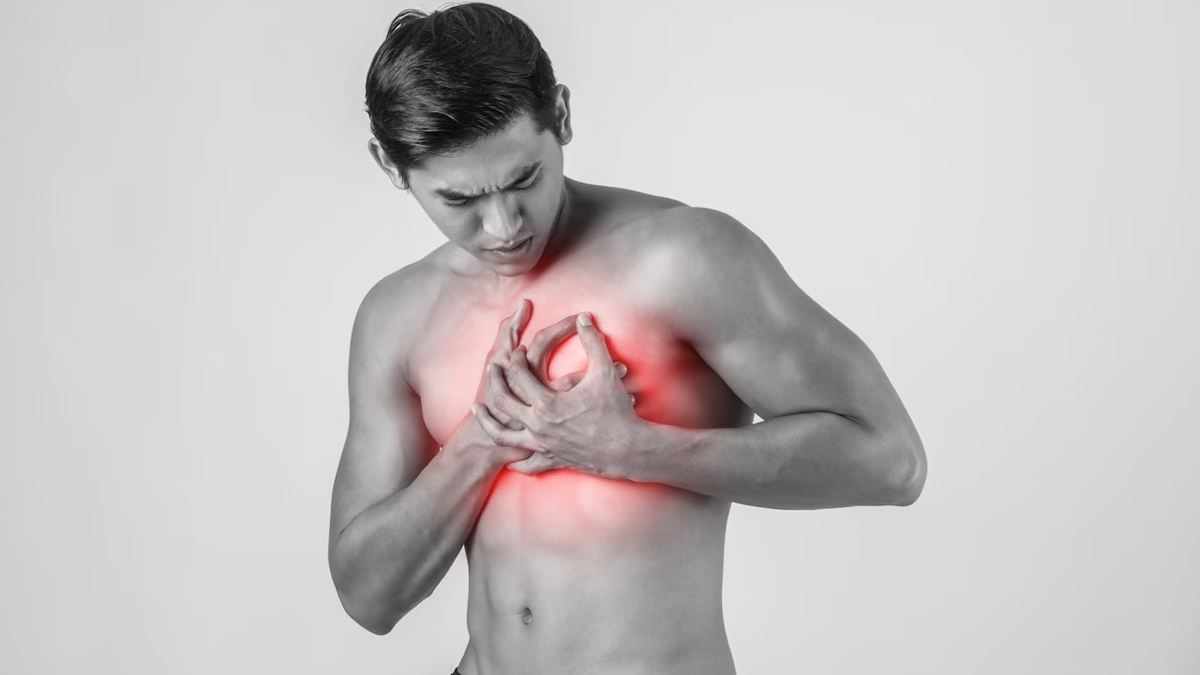
We often undermine the consequences of having a bad posture and slouching until it starts affecting our health. Your back and neck may agree if you're reading this while slumped on a couch or hunched over a desk. Long workdays at home or in the office are unknowingly contributing to the development of chronic back pain and other health problems, such as difficulty breathing, especially for many office workers. But is it possible for bad posture to cause chest pain? Let us find out:
Table of Content:-
How Bad Posture Cause Pain In The Chest
Dr. Jayesh Bhanushali, Consultant Spine Surgeon, KIMS Hospitals, Thane says yes it can. This is referred to as musculoskeletal (caused by abnormality of bones) chest pain and is not of cardiac origin. Posture can squeeze the chest wall, restrict lung expansion, and irritate the costochondral joints (where the breastbone and ribs meet). It can also lead to nerve impingement or stiffness in the upper back and cause severe pain in the chest, Dr Bhanushali explains.
Also Read: Back Pain In Young Working Professionals: A Growing Epidemic In IT Cities Like Bangalore

Agreeing with Dr Bhanushali, Dr Navita Purohit Vyas, Head, Pain and Palliative Medicine, Consultant, Rehabilitation Medicine, Kokilaben Dhirubhai Ambani Hospital, Mumbai explains that bad posture can cause pain in the neck, chest, back, shoulder, or any part of the body. “If you're sitting in a stooped posture, it causes chest pain. Due to formation of myofascial bands in chest wall muscles. These bands or knots become triggers for the pain and they start acting as such,” Dr Purohit adds.
Research also shows that hunching or leaning forward for hours—such as when you sit at a desk or when you hold your phone—can tighten the muscles and ligaments of the upper back and chest. This repetitive tensing of the muscles over time may result in dull, stabbing, or burning chest pain.
Symptoms And Treatment of Chest Pain Due Caused By Slouching
Symptoms of postural chest pain also generally rise with movement, breathing, or position and typically resolve with stretching, positional adjustment, and rest. Unlike chest pain secondary to the heart, it is not generally provoked by exercise and is not generally accompanied by sweating, nausea, or shortness of breath.
However, the doctors explained that there is no need to panic as this is myofascial pain (affecting muscles and bones) and can be treated by correcting the posture. Medications could also be prescribed in some cases and ultrasound guided interventions, in which your physician will identify the myofascial knots and inject into the knots by opening up and hydrodissection within the muscle. However, this has to be followed by right ergonomics (sitting positions) , physical therapy and strengthening of the muscles with exercises.
Tips To Correct Your Posture
Also Read: Is It A Heart Attack Or Gas? Expert Shares Key Differences To Note! -1753444366059.jpg)
To minimize the risk, the doctors suggested the following activities:
- Sit in a seated ergonomic position with back straight and feet firmly on the ground.
- Don't stoop over desks or phones.
- Stretch and shift position every 30–60 minutes by breaking.
- Incorporate posture-improving exercises such as yoga or wall angels into your daily routine.
- Practice mindful movement
Bottomline
Although, the doctors believe that bad posture and slouching can cause chest pain and pain around the chest area, however they cautioned against ever discounting chest pain. If the pain is intense, regular, or occurs with shortness of breath or dizziness, they strongly advised to visit a physician right away to rule out cardiac cause.
Also watch this video
How we keep this article up to date:
We work with experts and keep a close eye on the latest in health and wellness. Whenever there is a new research or helpful information, we update our articles with accurate and useful advice.
Current Version